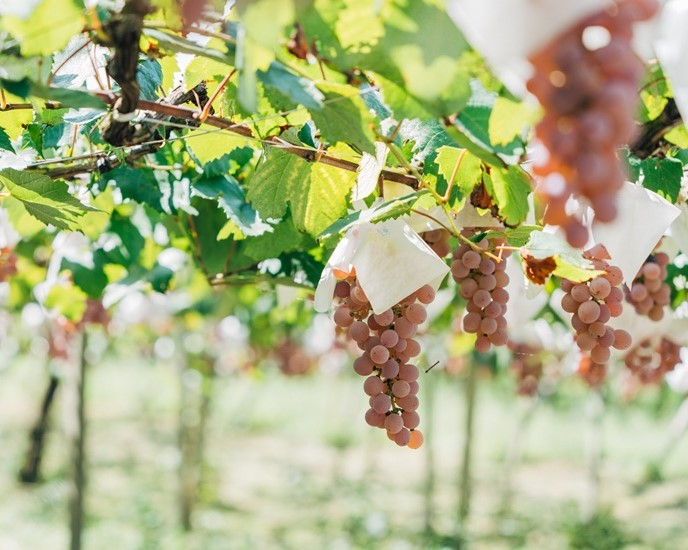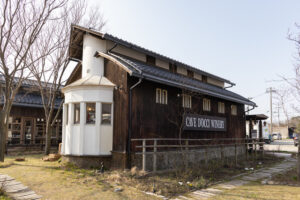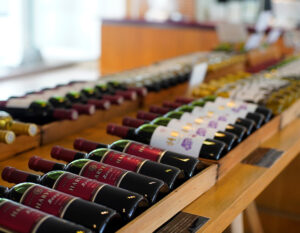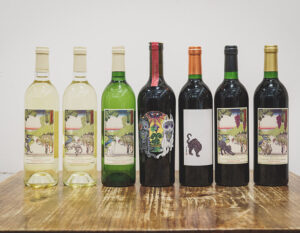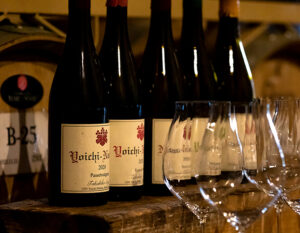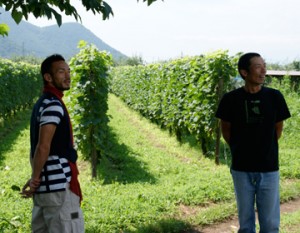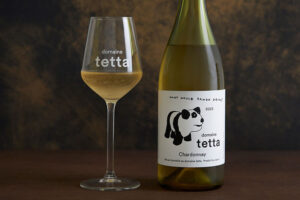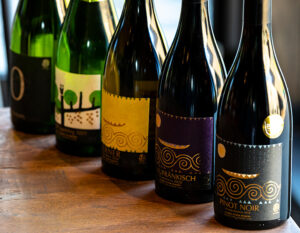Since the establishment of Furuya Brewery in the Meiji Era (1868-1912), when Western culture first entered Japan, Lumiere Corporation (hereafter Lumiere Winery) has been producing representative Japanese brands with an emphasis on Koshu, a variety born in Yamanashi Prefecture. President Shigeki Kida, who has devoted himself to the development of Yamanashi’s wine industry while focusing on the development of Koshu orange wine and sparkling wine unique to Japan, has a vision for the future.
Winery under the Imperial Household Agency warrant since its establishment in the Meiji era

The wine industry began in Japan during the turbulent period between the end of the Edo period and the Meiji period (1868-1912), when the port of Yokohama opened in 1859 and many Westerners arrived in Japan, giving the Japanese people their first taste of wine. The Meiji government positioned winemaking as an important industry, and wineries were built all over Japan.
In the midst of rapid modernization and a major wine boom, Lumiere Winery was founded in 1885 as Furuya Brewery and renamed Koshuen Corporation in 1943, and gained worldwide recognition when it won a gold medal at the Monde Selection International Wine Competition in 1967, and in 1992 The wine brand “Lumiere” became the company name.
In the Taisho Era (1912-1926), the company received a royal warrant from the Imperial Household Agency, and its prestigious winemaking style with its history and traditions has been handed down to the present day.
Wines of Koshu, a special variety for Yamanashi Prefecture

Shigeki Kida was appointed president on the occasion of the 120th anniversary of the company’s founding in 2005, and has served as a director of the Yamanashi Wine Brewers Cooperative Association since 2004, and was a judge at the Slovenian International Wine Competition in 2005. The greatest strength of Yamanashi is its Koshu grape. Since 2013, when Japan’s first “GI Yamanashi” geographical indication for wine was recognized, Koshu wines have gained worldwide recognition, and wine lovers from overseas visit Japan in search of Koshu,” he says. Koshu, with its delicate flavor and good balance, is easy to pair with food, and has been praised by overseas visitors for its excellent marriage with Japanese food in particular.
The company produces so much Koshu that it was named “Koshu En” (Koshu Garden), and even now focuses most of its efforts on Koshu wines, including “Koshu Surly” with its citrus aroma, “Hikari Koshu” with its rich and voluptuous taste from solid oak maturation, “Orange Wine” with its rich flavor with fruity aroma and mellow acidity, and “Prestige Class Oranger” with its fruity aroma and mellow acidity. Prestige Class Oranje,” a rich orange wine with a fruity aroma and mild acidity, rounds out the unique lineup. President Kida praises the high potential of Koshu, saying, “This variety is especially suitable for orange wine made from the skin.

The sparkling series, which is aged in bottle for at least one year after secondary fermentation in the bottle, also offers a wide variety. The dry sparkling Koshu has a solid depth, but is easy to pair with Japanese food. Sparkling orange wine made from Koshu is rare. “Koshu originally has a citrus aroma, so it can produce a refreshing taste. Compared to European varieties, the sugar content is 2 to 3 degrees lower, but if the grapes are harvested after they are fully ripened on the vine, the result is a sparkling wine with a full flavor,” he says.
In addition to Koshu, the company grows more than 10 other varieties, including Chardonnay, Merlot, Cabernet Sauvignon, and the Spanish variety Tempranillo, and is actively experimenting with Spanish, Italian, and other varieties as the weather warms. Among them, a rare variety called Mills is said to produce an aromatic wine with a sweet but lychee-like aroma.
Growing Grapes with an Organic Spirit

Currently, the company has its own 4-hectare vineyard, which is cultivated using no-till, grass-based cultivation, and reduced use of pesticides, which is similar to natural farming methods. Basically, they cultivate their grapes without fertilizers as much as possible, and they work on recycling-oriented agriculture by composting the grape pomace for a year and returning it to the soil. We don’t overdo it or do anything unnecessary,” he says. We don’t try to unnecessarily increase the sugar content, and we believe that wine made from grapes produced in this natural environment is the best for the Japanese body and diet. From cultivation to winemaking, the young members of the team are at the center of Lumiere’s winemaking process, and they all work together to make the wine. I think the kindness of the staff is reflected in the taste of the wine.
Ancient equipment and production methods passed down through the ages

Lumiere Winery, which has been weaving its history since the Meiji Era, still retains valuable historical legacies used in winemaking. The “Ishikura Fermentation Tank,” designated as a Tangible Cultural Property by the Japanese government, is a stone fermentation tank built in 1901, taking advantage of the slope of a fan-shaped land. In 2018, it was designated as a cultural asset of the “Landscape of Vineyards – Koto Region, Yamanashi Prefecture,” a Japanese Heritage site, and even today, Muscat Berry A is brewed using this traditional stone fermentation tank and sold as “Ishikura Wadin”. The company also holds “Ishikura Wadin Brewing Experience Events,” where visitors can experience everything from grape harvesting to brewing.
The underground stone cellar, lined with old barrels, has been in use for many years and is kept at an average temperature of 19 degrees Celsius, which is suitable for fermentation regardless of the season, making use of the characteristics of geothermal heat. During the fall vinification season, the sound of fermentation can be heard constantly from the barrels, and one can feel the vitality of the grapes from the sound of their breath.
As an organizer of wineries in the prefecture

President Kida, who is currently focusing on marketing as vice president of the Yamanashi Wine Brewers Association, says, “There is no doubt that Japanese wine is in the limelight from around the world. Especially in Yamanashi, the association provides solid technical guidance and has raised the overall level of the industry,” he says. There are more than 90 wineries in the prefecture that are unique and attractive, and one of Yamanashi’s strengths is the ability to mutually share data from research and analysis conducted by major companies in cultivation and winemaking. The accumulation of data from various wineries multiplies their experience by many times,” he said. The advantage of Yamanashi wineries is that they can share technical information with each other even though they are rivals,” he says.
However, there are challenges unique to a major fruit-growing region. Koshu is a native Yamanashi grape variety that has existed since the Nara period (710-794), and is said to be resistant to climate change, but President Kida fears that Koshu will disappear due to a decrease in the number of farmers. He said, “Many grape growers are switching from Koshu to Shine Muscat because of the high selling price, and the number of grapes for brewing is decreasing year by year, making the shortage of raw materials a problem. That is why it is necessary to create a system that allows grape growers to earn a solid income from growing grapes for brewing,” he said enthusiastically.
As a manager, he says, “I am always thinking about what the wineries in Yamanashi should be like as a whole. Since the latest vinification equipment is now readily available from overseas, and wineries in Japan are now at the top level of vinification equipment, “Now it is important how to reduce the burden of labor in cultivation and how to increase agricultural productivity,” he said. The Yamanashi Wine Brewers Association as a whole is actively engaged in research on varieties, growing regions, and countermeasure technologies based on climate change, which will lead to further improvement of Yamanashi wines,” he said enthusiastically.
For further development of Yamanashi wines

We see our proximity to Tokyo, a major consumption center, as an advantage. “We will create new values such as ‘Sparkling Oranje,’ further improve the quality of our products, and actively disseminate information about them. We will also make efforts to encourage people to visit wineries in Yamanashi. In particular, the Koto region, which accounts for more than half of the wineries in Yamanashi Prefecture, is close to breweries, making it easy to visit wineries.
To this end, the challenge is to create a transportation system. Although buses and cabs are available, they are limited and sometimes inconvenient during the tourist season. There is an urgent need to improve the infrastructure so that people from Japan and around the world can visit the region.
President Kida, who has also served as chairman of Koshu Of Japan (KOJ), a Yamanashi wine export project launched in 2009 with the aim of branding Yamanashi wines and expanding the market for Koshu wines, says he will put even more effort into exporting overseas. In recent years, exports to Southeast Asia in particular have been increasing, and he smiles, “In countries that use fermented seasonings, local cuisine and Japanese wine go well together.
Lumiere Winery has been producing wines that are highly acclaimed around the world by taking on the challenge of innovative winemaking while inheriting vineyards with a history of more than 130 years and traditional production methods. Lumiere” means “light” in French. Lumiere” means “light” in French, and the future of Japanese wine will shine brighter, stronger, and more solidly.



